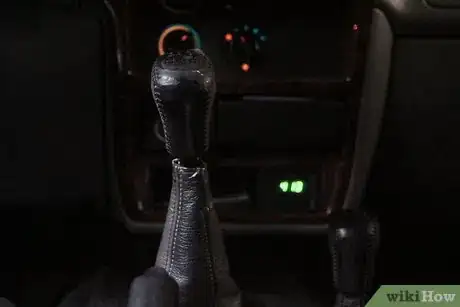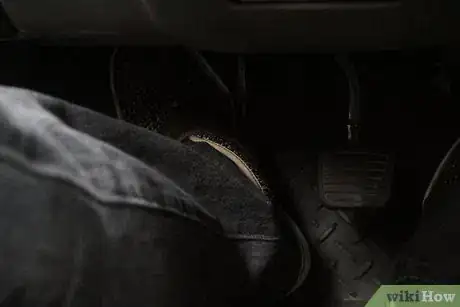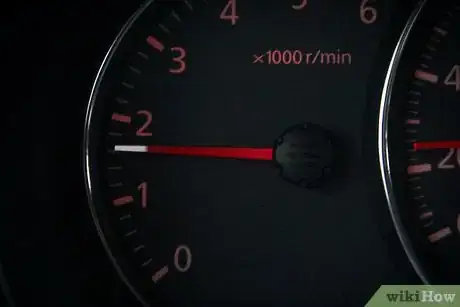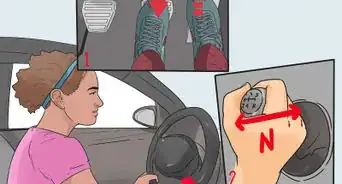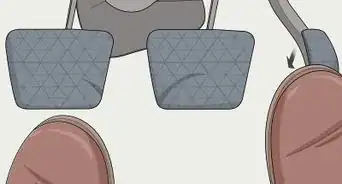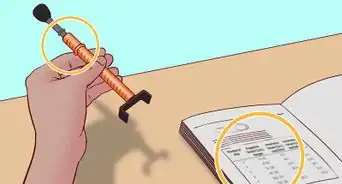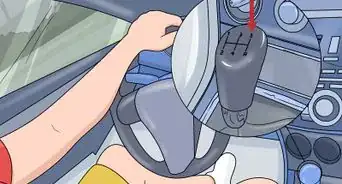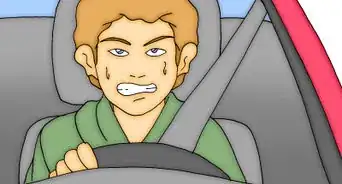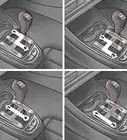X
wikiHow is a “wiki,” similar to Wikipedia, which means that many of our articles are co-written by multiple authors. To create this article, 9 people, some anonymous, worked to edit and improve it over time.
This article has been viewed 197,382 times.
Learn more...
Double clutch downshifting was used back in the early 20th century before transmissions had synchronizers and the clutch couldn't engage without the double-clutch. It is used today primarily in racing because it makes a more efficient down shift. If you're interested in learning how to double clutch into a turn instead of wearing down your transmission and brakes, here's how.
Steps
-
1Know the situations in which it would be useful to double clutch downshift. In the days before syncromesh transmissions, double clutching was a necessity if you didn't want to tear up your gearbox. Nowadays, you can downshift all you like without double clutching, although the shift isn't going to be all that smooth and the RPM will rev up. Still, here are two reasons why you'd want to double clutch downshift on your manual transmission car:[1]
- For smoothness of shift, especially when skipping more than one gear. If you're taking a turn around a bend and don't want to ride your brakes, you can downshift from 4th to 2nd gear, for example. Ordinarily, skipping a gear without double clutching in your downshift will cause the shift to be somewhat jerky.
- Prolonging the life and health of the synchros. If you drag the gear from 3rd to 2nd, for example, it takes a little while for the 2nd gear synchro to do its job, meaning that the gears don't mesh all that well. Double clutch downshifting, if done properly, will switch gears instantaneously, preserving the life of your synchros.
-
2Find an empty parking lot. It's best to practice in a space that's not heavily frequented. While double clutching isn't horribly difficult, you want to minimize your chances of something going wrong while you learn the ropes.Advertisement
-
3Start off in a low gear for practice. Accelerate up to 3rd gear, for example, and push in the clutch in anticipation of a normal gear shift. So far, you aren't doing anything you haven't done before.
-
4As you depress the clutch, shift into neutral and release your foot from the clutch. You should be traveling roughly 25 mph (40 kmph) with your transmission in neutral.[2]
-
5Depress the accelerator — with the car still in neutral — to increase the RPMs. Your goal here is to hit the accelerator until the engine RPMs are just a bit higher than the RPMs that you will be at in the lower gear, helping the transmission speed balance out the engine speed.[3]
- To understand the concept, imagine what happens when you merely drag the transmission from 3rd to 2nd, for example, without doubling clutching. Your RPMs shoot through the roof, don't they? Well, the goal is to get the RPMs closer to what they would be in an ordinary downshift before the downshift happens. This relieves pressure and minimizes wear on the transmission.
-
6With your foot off the acceleration, push in the clutch one last time. This is where "double clutching" gets its name: It's the second time you've hit the clutch before shifting into a lower gear.[4]
-
7Shift down from neutral into your desired gear.[5]
-
8Release the clutch, quicker than you normally would. There you go — you got it. Start off practicing the double clutch maneuver in low gears and low speed. Once you get the hang of it, gradually increase both the speed at which you're traveling and the speed with which you double clutch downshift.
- While the basic technique is pretty straightforward, mastering it will take some time. If you're serious about racing, you may even want to invest time in heel-and-toe downshifting, which takes considerable practice but utilizes the same basic concept.
Advertisement
Community Q&A
-
QuestionDoes this article apply to trucks too?
 AcyclistTop AnswererYes (providing they have a manual gearbox).
AcyclistTop AnswererYes (providing they have a manual gearbox). -
QuestionI thought the whole idea of a manual transmission was so you could downshift to slow the vehicle? It's illegal to have the car out of gear, so when you slow down, how do you do it without double shifting?
 Community AnswerIt is only illegal to coast downhill in neutral. Having a vehicle in neutral for a short time between gears is required on a manual transmission.
Community AnswerIt is only illegal to coast downhill in neutral. Having a vehicle in neutral for a short time between gears is required on a manual transmission. -
QuestionIs this maneuver hard on the clutch?
 Community AnswerNo. CYour clutch is actually designed for much more abuse than double-clutching. However, be careful you don't grind gears by clutching out too quickly before you're back in gear.
Community AnswerNo. CYour clutch is actually designed for much more abuse than double-clutching. However, be careful you don't grind gears by clutching out too quickly before you're back in gear.
Advertisement
Warnings
- Don't try this if you're new with manual transmission vehicles.⧼thumbs_response⧽
Advertisement
References
- ↑ https://www.roadandtrack.com/car-culture/a11646461/what-is-double-clutching-and-how-does-it-work/
- ↑ https://www.yourmechanic.com/article/how-to-double-clutch-downshift-a-manual-transmission-car-by-jason-unrau?PID=8980730&as=cj&mktg_channel=AFL_CJN&publisher=Autoblog
- ↑ https://www.yourmechanic.com/article/how-to-double-clutch-downshift-a-manual-transmission-car-by-jason-unrau?PID=8980730&as=cj&mktg_channel=AFL_CJN&publisher=Autoblog
- ↑ https://www.yourmechanic.com/article/how-to-double-clutch-downshift-a-manual-transmission-car-by-jason-unrau?PID=8980730&as=cj&mktg_channel=AFL_CJN&publisher=Autoblog
- ↑ https://www.yourmechanic.com/article/how-to-double-clutch-downshift-a-manual-transmission-car-by-jason-unrau?PID=8980730&as=cj&mktg_channel=AFL_CJN&publisher=Autoblog
About This Article
Advertisement
